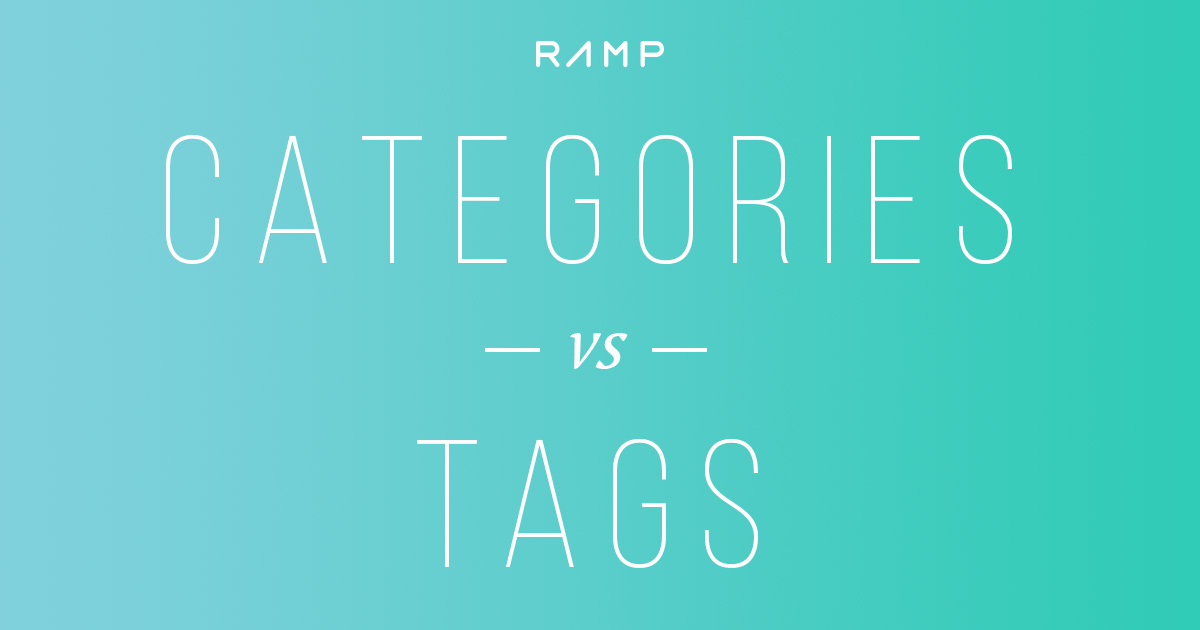
WordPress Categories vs. Tags
So you have a new WordPress blog up and running but you’re not sure how to organize your content. Should you use categories or tags…or both?
For starters, it helps to understand the purpose of categories and tags. In WordPress the main page of your blog is called “the loop”. This page loops through your posts showing information like the title, a featured image, an excerpt of the post, and a link to read more.
Categories and tags are referred to as taxonomies and they function as a way to sort content to loop through posts that match only that specific criteria. Some blog readers may only want to see articles relating to a specific topic. Categories and tags make this possible.
Differences between categories and tags
There are two main differences between categories and tags. First, categories are hierarchical while tags are not. This means that you can have sub-categories that relate to each other but each tag is completely independent from the other tags.
The second difference is that in WordPress you’re forced to choose a category when you publish a post but you don’t have to use tags. Depending on how your website is built you may or may not have categories and tags displayed on your blog posts. However, WordPress by default throws every post into the “Uncategorized” category but does not make you choose a tag for each post.
ESPN example
One of the best examples to explain categories and tags is ESPN. (Even though it’s not a WordPress site it’s easy to follow the way they sort content.)
Categories
Because categories are hierarchical they can sort their content as follows:
- NFL
- AFC
- AFC East
- New England Patriots
- New York Jets
- Miami Dolphins
- Buffalo Bills
- AFC North
- …
- AFC East
- NFC
- …
- AFC
- MLB
- National League
- NL East
- Atlanta Braves
- Miami Marlins
- New York Mets
- Philadelphia Phillies
- Washington Nationals
- NL Central
- NL West
- NL East
- American League
- …
- National League
- NBA
- NHL
- …
Tags
Because tags are not hierarchical they could be thought of as the following:
- Stephen Curry
- LeBron James
- NBA Finals
- Matt Ryan
- Atlanta
- Cleveland
- …
For example. Let’s pretend there’s an article about LeBron James’s performance in the NBA Finals each year of his career comparing him to Michael Jordan. This article might be placed in the following categories: NBA, Cleveland Cavilers, Miami Heat, and Chicago Bulls. Also, this could be tagged with LeBron James, Michael Jordan, Cleveland, Chicago and NBA Finals.
Suggestions for your blog
While your blog will most certainly not be as complicated as ESPN’s this example helps us understand and appreciate the value of organization for readers. As you begin blogging here’s a few pointers that will help you along the way:
1. Start with a few broad categories.
Begin by picking 3-5 categories that will describe most of your writing. As you think of the content you will write it’s also great to have an “Other” or “Misc.” category for the occasional post that doesn’t fit within the main hierarchy of your blog categories.
2. Develop child categories as your blog grows.
If you’re just starting off with blogging then it’s a little excessive to have 5 categories and 5 sub-categories for each one of these. Develop your child categories as your writing grows and you have several articles to place within each category.
3. Use tags when you have related content that isn’t hierarchical.
Tags are great as your blog grows because they let you connect posts that aren’t going to fit within current categories. They can be used to connect posts to each other without over complicating the category structure.
It’s an art not a science
There’s no exact way to build a blog and get your categories and tags perfect from the start. As your blog grows you’ll better understand the hierarchy of your content and your categories are likely to change.
The main goal is to think like your readers and organize your content in a way that encourages people to read your blog more. The best strategy is to keep your category and tag structure simple at the start and let it grow with your blog as you develop more content.

